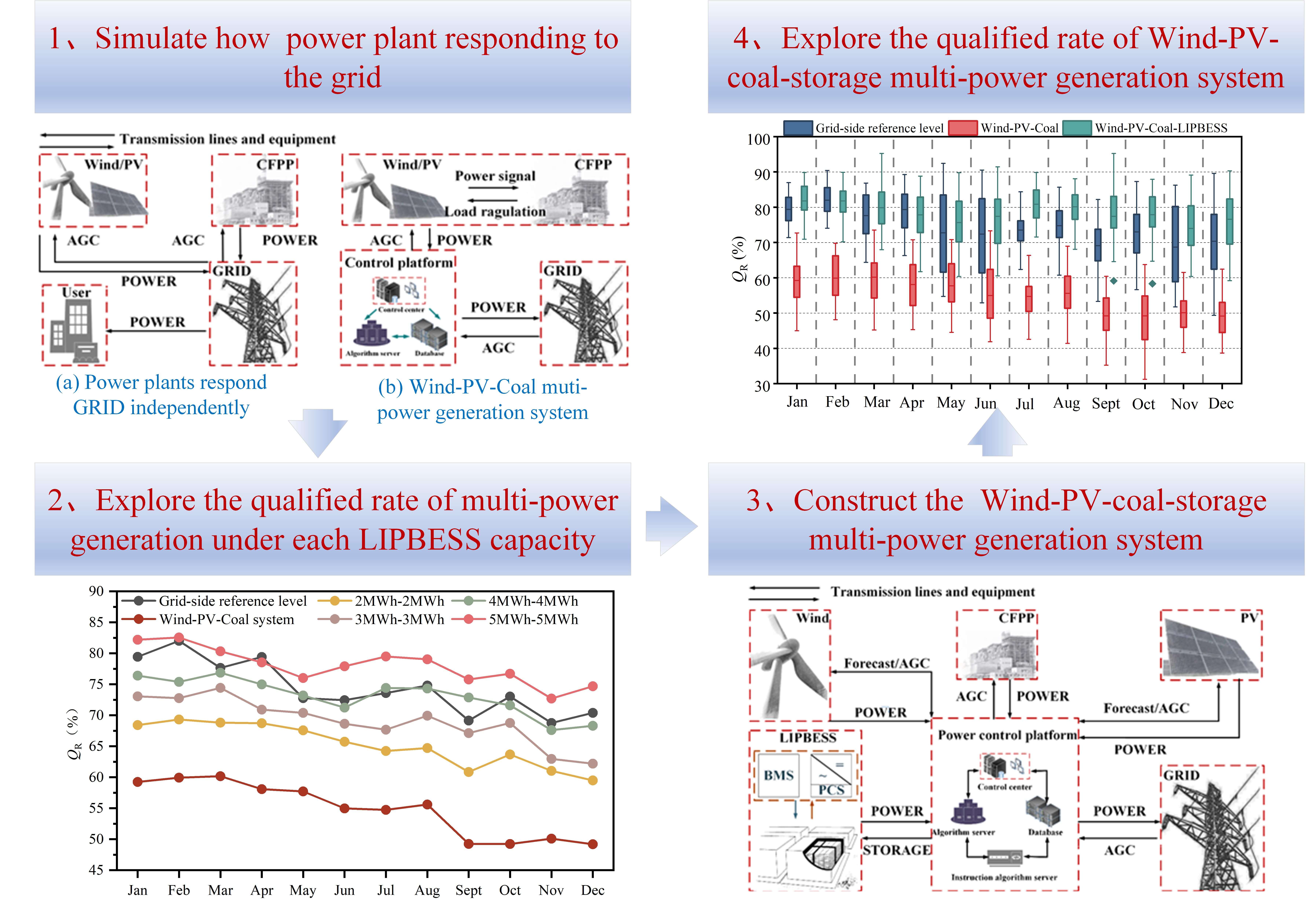 Open Access
Open Access
ARTICLE
Investigating Load Regulation Characteristics of a Wind-PV-Coal Storage Multi-Power Generation System
1 Sinopec Star Co., Ltd., Zhengzhou, 450000, China
2 Hebei Key Laboratory of Low Carbon and High Efficiency Power Generation Technology, North China Electric Power University, Baoding, 071003, China
* Corresponding Author: Enhui Sun. Email:
(This article belongs to the Special Issue: Key Technologies of Renewable Energy Consumption and Optimal Operation under )
Energy Engineering 2024, 121(4), 913-932. https://doi.org/10.32604/ee.2023.043973
Received 17 July 2023; Accepted 09 October 2023; Issue published 26 March 2024
Abstract
There is a growing need to explore the potential of coal-fired power plants (CFPPs) to enhance the utilization rate of wind power (wind) and photovoltaic power (PV) in the green energy field. This study developed a load regulation model for a multi-power generation system comprising wind, PV, and coal energy storage using real-world data. The power supply process was divided into eight fundamental load regulation scenarios, elucidating the influence of each scenario on load regulation. Within the framework of the multi-power generation system with the wind (50 MW) and PV (50 MW) alongside a CFPP (330 MW), a lithium-iron phosphate energy storage system (LIPBESS) was integrated to improve the system’s load regulation flexibility. The energy storage operation strategy was formulated based on the charging and discharging priority of the LIPBESS for each basic scenario and the charging and discharging load calculation method of LIPBESS auxiliary regulation. Through optimization using the particle swarm algorithm, the optimal capacity of LIPBESS was determined to be within the 5.24–4.88 MWh range. From an economic perspective, the LIPBESS operating with CFPP as the regulating power source was 49.1% lower in capacity compared to the renewable energy-based storage mode.Graphic Abstract

Keywords
Cite This Article
 Copyright © 2024 The Author(s). Published by Tech Science Press.
Copyright © 2024 The Author(s). Published by Tech Science Press.This work is licensed under a Creative Commons Attribution 4.0 International License , which permits unrestricted use, distribution, and reproduction in any medium, provided the original work is properly cited.


 Submit a Paper
Submit a Paper Propose a Special lssue
Propose a Special lssue View Full Text
View Full Text Download PDF
Download PDF Downloads
Downloads
 Citation Tools
Citation Tools